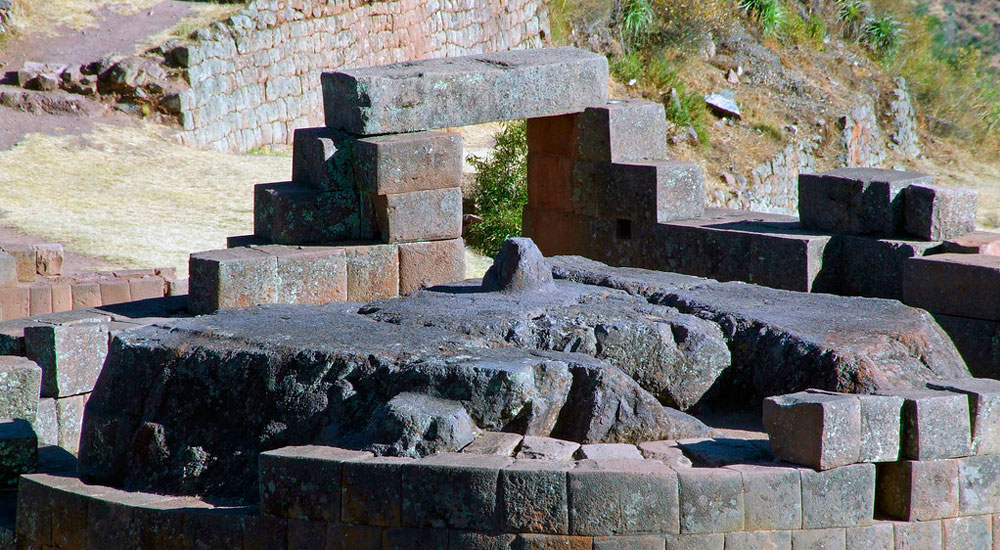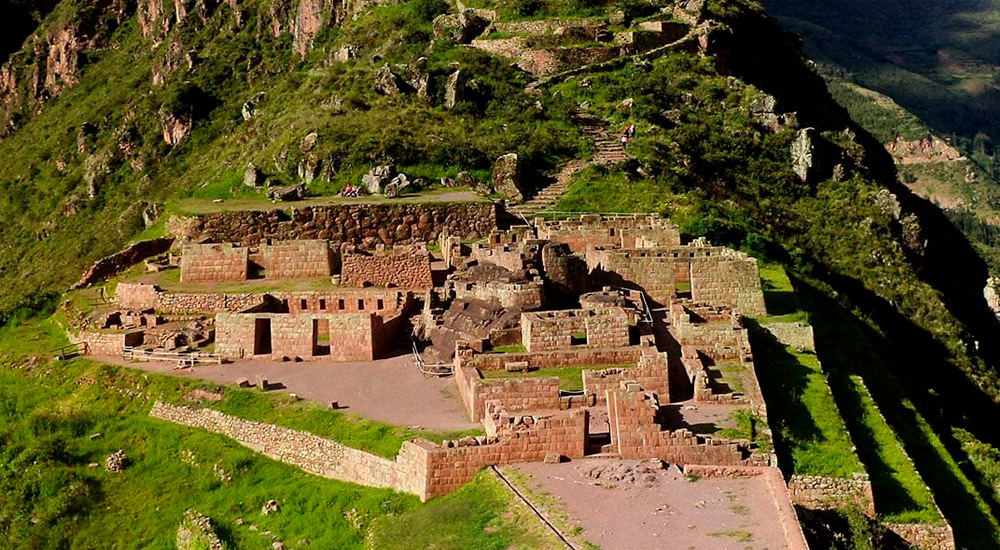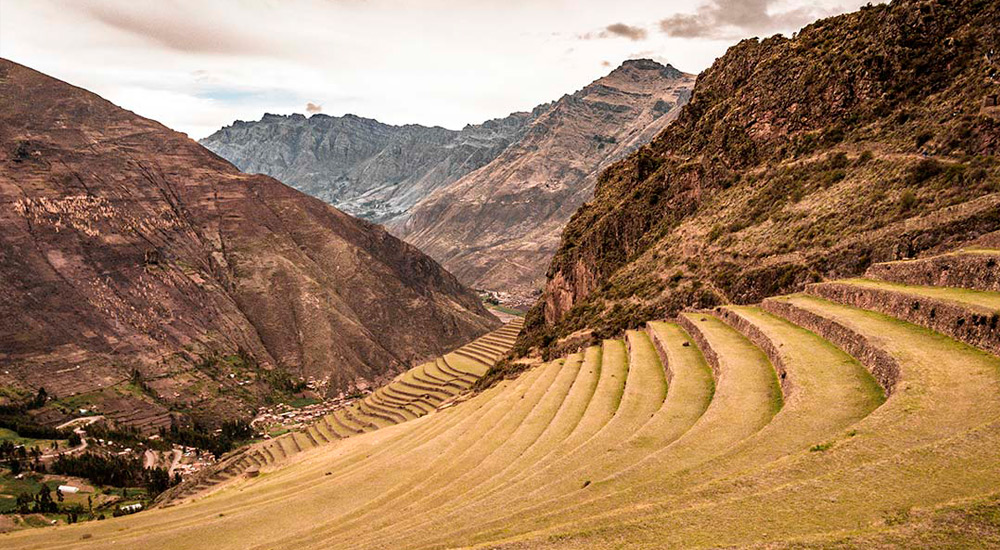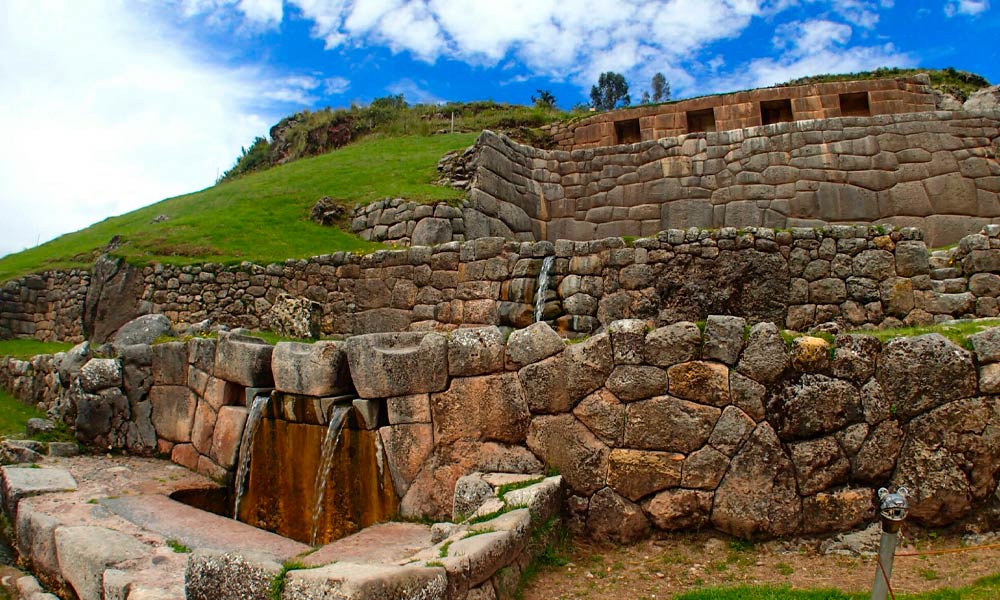Step into the Mystical Past at the Intiwatana of Pisac: Cusco’s Ancient Solar Observatory
The Intiwatana of Pisac, an archaeological gem nestled in the heart of Cusco, stands as a testament to the deep reverence the Incas held for the celestial heavens and the mighty sun. This enigmatic structure is more than just a set of stones; it’s a portal to the past, offering us a glimpse into the spiritual and astronomical wisdom of this remarkable civilization.
The term “Intiwatana” itself carries profound significance, often referred to as a “hitching post of the sun.” It was believed that the Incas used these stones as astronomical and ceremonial tools to connect with the sun, which they considered the source of life, energy, and enlightenment.
As you stand in the presence of the Intiwatana of Pisac, you’ll notice its precise alignment with the sun’s movements. The stone structure was ingeniously designed to function as a solar observatory. During the solstices, equinoxes, and other key celestial events, the Intiwatana would cast unique shadows that marked significant moments in the Inca calendar. These events had immense spiritual and agricultural importance, symbolizing the changing of seasons and the agricultural cycles essential for sustenance.
The Intiwatana, perched high in the Andes, not only connected the Incas to the heavens but also served as a center for their spiritual rituals. These rituals, conducted with deep reverence and gratitude for the sun’s life-giving energy, ensured the well-being of their people and the fertility of the land. The Incas believed in the reciprocal relationship between humanity and the cosmos, and the Intiwatana was a focal point for these celestial connections.
Visiting the Intiwatana of Pisac is an opportunity to rekindle the mystical ties between the Earth, the sun, and the cosmos. As you wander through the ruins and stand by the sacred stone, you may sense the ancient energies that still linger in the air. The aura of this place invites contemplation, reflection, and a profound appreciation for the Incas’ wisdom and spirituality.
It’s a reminder that the Intiwatana was not just an astronomical instrument but a spiritual conduit. It symbolized the Incas’ ability to harmonize with the universe, their deep understanding of the natural world, and their unwavering respect for the sun, a celestial force that continues to inspire and illuminate, both in the physical and spiritual realms.

The Intiwatana: A Sacred Solar Observatory
The Intiwatana, often referred to as the “hitching post of the sun,” was a sacred and highly sophisticated structure in the Inca civilization, serving as both a spiritual focal point and an advanced astronomical observatory. Its importance went far beyond mere stone and mortar; it was a symbol of the Inca’s profound connection to the cosmos.
At the Intiwatana, the Incas showcased their advanced knowledge of astronomy. The structure was meticulously aligned with the celestial bodies, allowing them to accurately track the movements of the sun, stars, and constellations. It’s essential to understand that their understanding of the celestial realms was closely tied to their agricultural practices and religious ceremonies. The Intiwatana, therefore, played a crucial role in determining planting and harvesting times, ensuring the prosperity of their crops and, by extension, their people.
What makes the Intiwatana even more fascinating is the intricacy of its design. The stone structure was created with an astounding level of precision, using it to cast specific shadows at critical times of the year, such as the solstices and equinoxes. These celestial events were of paramount significance in Inca culture and were celebrated through elaborate rituals and ceremonies that further emphasized the relationship between the heavens, Earth, and humanity.
The Intiwatana at Machu Picchu is not the only astronomical observatory in the region. The entire city of Machu Picchu was, in essence, an astronomical marvel, with various structures aligned with celestial events. Intiwatana’s counterpart at Machu Picchu is the Intihuatana stone, which also served as a solar observatory. The name “Intihuatana” translates to “hitching post of the sun,” emphasizing its role in connecting with the sun’s divine energy.
To visit Machu Picchu, there are several routes, but one of the most impressive and accessible options is the two-day Inca Trail. This trek not only offers a fantastic journey through stunning landscapes but also provides a profound cultural and historical experience. The Inca Trail allows visitors to immerse themselves in the history and spirituality of this iconic site, making it a memorable adventure suitable for people of all ages, including children. The breathtaking views, archaeological wonders, and the sense of stepping back in time to the Inca era make it an extraordinary and enlightening journey.
Reconnecting with Ancient Wisdom
Standing in the presence of the Intiwatana, you can’t help but be overcome by a profound sense of connection with the ancient Inca civilization. The Intiwatana’s precision in aligning with the cardinal points and key celestial events is nothing short of awe-inspiring. It speaks volumes about the Inca people’s deep reverence for the natural world and their extraordinary harmony with the cosmos.
The Inca civilization, at its core, was an intricate fusion of spirituality and scientific acumen. Their observations of the heavens were deeply intertwined with their religious beliefs and the practical necessities of survival. They recognized that by understanding and harnessing the movements of celestial bodies, they could predict the seasons, plan their agricultural activities, and ensure bountiful harvests, which were essential for the prosperity and well-being of their society.
The Intiwatana’s alignment during solstices and equinoxes is particularly captivating. During these key celestial events, you are enveloped in a transformative experience. It’s as if you’ve been transported back in time to an era where the Inca civilization thrived. These moments allow you to step into the shoes of ancient Inca priests and scholars, who meticulously observed the heavens and interpreted their movements as divine messages.
To witness the Intiwatana’s alignment with the sun during solstices and equinoxes is to immerse yourself in the spiritual heart of Inca culture. It’s a profound reminder of their unwavering connection with the celestial realms, where they believed their deities resided. The Intiwatana isn’t just a stone structure; it’s a direct portal to the spiritual and scientific sophistication of the Inca civilization.
In experiencing these alignments, you can’t help but be drawn into the Inca worldview, where the sun was seen as the source of all life and the key to their agricultural success. It’s a unique opportunity to understand how this ancient culture viewed the world around them and to appreciate the beauty of their spiritual and scientific heritage. The Intiwatana becomes a conduit for the past, linking you to the wisdom of a civilization that continues to inspire and intrigue us today.
Pisac: A Sacred Place of Power
The Intiwatana of Pisac resides within the captivating Pisac archaeological complex, an expansive site that weaves together an intricate tapestry of terraces, temples, and residential areas. As you explore this site, you can’t help but marvel at the sheer scale of the Inca’s architectural prowess and their keen understanding of harmonizing human structures with the natural environment.
The site’s location is not a matter of mere chance; it’s a testament to the Inca’s deep connection with the land and the cosmos. Perched majestically above the sacred Urubamba River Valley, the Pisac complex offers an awe-inspiring panoramic view. This location, overlooking the valley, the river below, and the surrounding mountains, adds an extra layer of mystical ambiance to the site.
The Incas were renowned for their spiritual reverence for the natural world, and Pisac is no exception. The alignment of the complex with the cardinal points and celestial events was not just a matter of architectural planning; it was a reflection of their belief in a harmonious connection with the universe. The Pisac complex is a living testament to their understanding of the land’s sacredness and the cyclical patterns of nature, as embodied by the nearby river and the celestial heavens.
It’s on this ground that they built not just stone structures but bridges between the earthly and the divine. Pisac, like many other Inca sites, served as a place of spiritual power and reflection, where the ancient people sought to be in harmony with the cosmos and the elements. As you wander through the terraces, explore the meticulously crafted stonework, and stand before the Intiwatana, you’re immersed in an experience that transcends time, a connection with a civilization that found profound meaning and spirituality in the very land beneath your feet.
The Pisac archaeological complex is more than a testament to ancient engineering; it’s a living testament to the Inca’s spiritual wisdom and their reverence for the world in which they lived. It’s a reminder that the Inca civilization was not only about the physical, but also about the ethereal, and that their understanding of the interplay between the two continues to resonate with those who visit today.

Unraveling the Secrets of the Intiwatana
Embark on a mesmerizing journey with us as we unveil the well-guarded secrets of the Intiwatana of Pisac. This extraordinary place isn’t merely an archaeological site; it’s a portal to a realm where the boundaries of time and space blur, and where the knowledge of the cosmos intertwined seamlessly with spiritual devotion.
The story of Pisac, like the rest of the Inca Empire, is a narrative of astonishing architectural and engineering mastery. Here, we’ll delve into the fascinating history of this site, where every stone is a testament to the Inca’s precision and dedication to perfection. Pisac, with its intricate terraces, well-planned temples, and the awe-inspiring Intiwatana, showcases the zenith of Inca architectural brilliance. Every nook and cranny of this place exudes the spirit of a civilization that thrived in harmony with the land and the heavens.
Central to this exploration is the Intiwatana itself, the enigmatic “hitching post of the sun.” This ritual stone monument holds a profound connection to the celestial realm. The Intiwatana served as a sophisticated solar observatory, where the Incas, with their advanced understanding of astronomy, meticulously tracked the movements of the sun, stars, and constellations. It was not just a scientific instrument but a bridge between the earthly and the divine. The alignment of the Intiwatana with solstices and equinoxes reveals the Incas’ reverence for the natural world and their belief in the intimate connection between the cosmos and the terrestrial realm.
As you stand before the Intiwatana, the precision of its design and alignment with the cardinal points will stir deep emotions. It is here, amidst the stone-carved wisdom of the Incas, that the past comes alive. Experiencing the solstices and equinoxes at this sacred site is nothing short of transformative. You are enveloped in the beliefs and knowledge of a civilization that once thrived in this very space, and you can’t help but feel an intimate connection with their spirituality and reverence for the cosmos.
The site’s broader context is equally captivating. The Pisac complex, with its vast terraces, carefully constructed temples, and residential areas, provides an astonishing glimpse into the Inca way of life. It was not just a city; it was a living testament to their belief in harmony with the natural world. The site’s perch overlooking the sacred Urubamba River Valley adds to the mystical ambiance, reminding us of the Inca’s intimate connection with the land and the celestial heavens.
In the heart of Pisac, the Intiwatana stands as a symbol of the Inca’s pursuit of wisdom and their profound spiritual devotion. We invite you to join us on this expedition into the heart of Pisac, a place where ancient astronomical knowledge converged with spiritual fervor, and where the spirits of the Incas and the cosmos dance in harmony.

Unlock the Mysteries of the Intiwatana
Prepare to be entranced by the captivating allure of the Intiwatana of Pisac, a place that offers much more than meets the eye. Regardless of whether you are an astronomy enthusiast, a history buff, or a seeker of spiritual insights, the Intiwatana of Pisac promises an experience that will deepen your appreciation for the enduring wisdom of the Inca civilization.
For those fascinated by the intricate dance of celestial bodies, the Intiwatana provides an unparalleled window into the Inca’s advanced understanding of the cosmos. Every angle and alignment of this ritual stone monument was carefully crafted to capture the movements of the sun, stars, and constellations with remarkable precision. This is a testament to the Incas’ profound appreciation for astronomy, which not only guided their agricultural practices but also shaped their spiritual beliefs.
History enthusiasts will find themselves transported back in time as they explore the architectural marvels of Pisac. The entire site is a masterful demonstration of the Inca’s engineering skills, characterized by intricate terraces and carefully planned temples. As you walk through these ancient stone structures, you can’t help but marvel at the craftsmanship and ingenuity that defined the Inca way of life.
Seekers of spiritual insights, on the other hand, will feel a deep connection with the spiritual devotion that once reverberated through these sacred grounds. The Intiwatana was more than an astronomical tool; it was a conduit between the earthly realm and the divine. When you stand in its presence, you’ll feel the energy of countless ceremonies and rituals that were performed here, seeking harmony with the cosmos.
As you explore the Intiwatana of Pisac, the aura of the ancient Inca civilization envelops you. It’s a place where the past is palpable, where wisdom and spirituality intertwine. Whether you come for the science, the history, or the spiritual resonance, you will undoubtedly leave with a profound appreciation for the enduring legacy of the Incas in Cusco. The Intiwatana of Pisac is a place where time, history, and spirituality merge, offering a profound and unforgettable experience.









